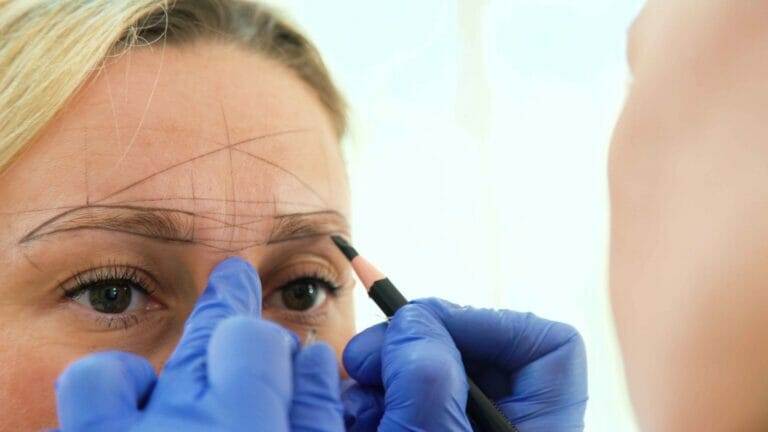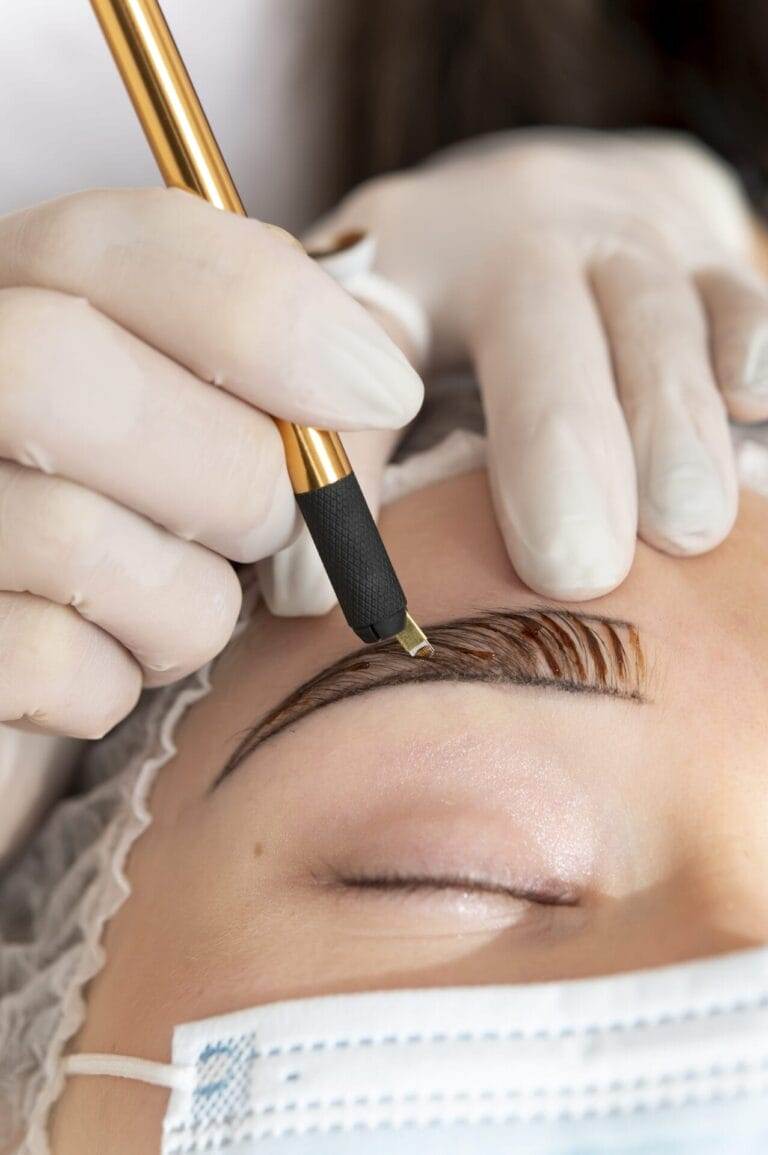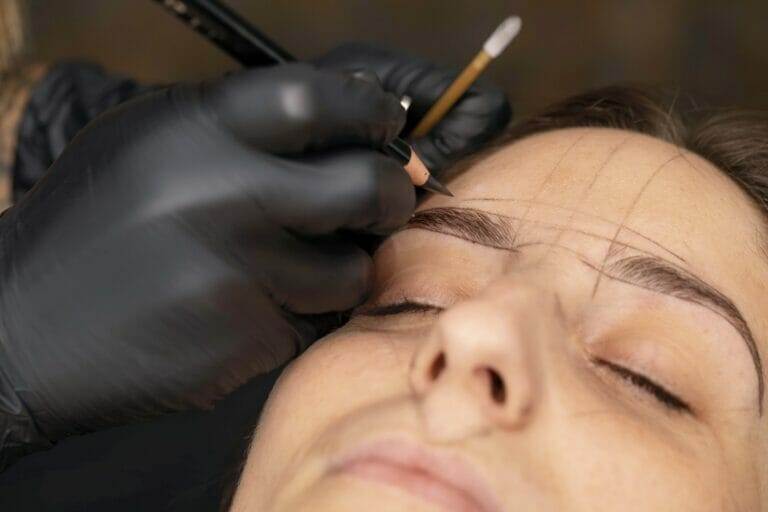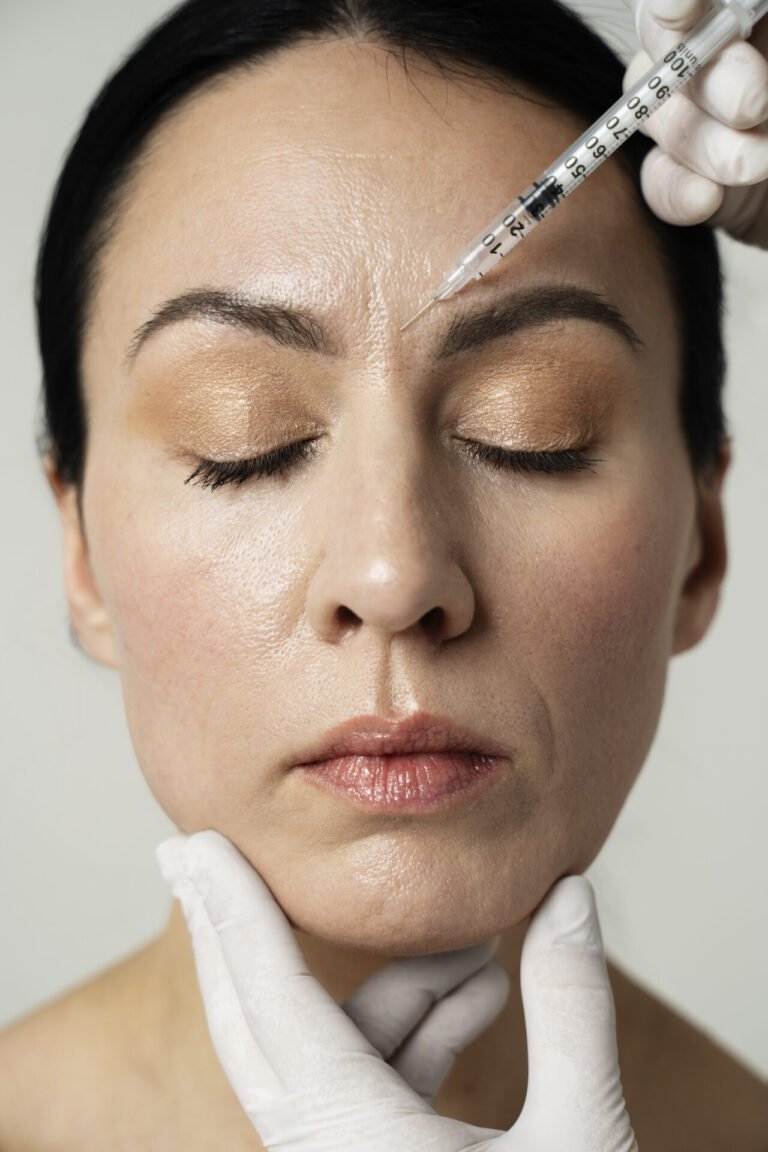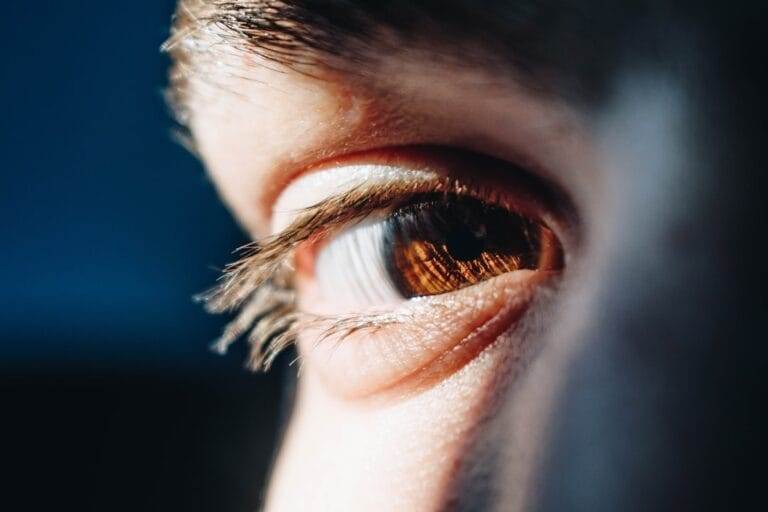In recent years, microblading has become increasingly popular as a method of achieving perfectly shaped and defined eyebrows. This semi-permanent cosmetic procedure has gained a lot of attention due to its ability to create natural-looking results that can last for months. Microblading is a great option for those who want to enhance their eyebrows and achieve a more polished and put-together look. In this article, we will explore what microblading is, how it works, the importance of choosing a skilled artist, the role of color theory in achieving natural-looking eyebrows, the different styles of microblading, the process and what to expect during your appointment, aftercare tips, common myths and misconceptions, how microblading can benefit those with sparse or thin eyebrows, and frequently asked questions about microblading and eyebrow enhancement.
What is Microblading and How Does it Work?
Microblading is a semi-permanent cosmetic procedure that involves using a handheld tool with tiny needles to create hair-like strokes on the skin. These strokes mimic the appearance of natural eyebrow hairs and can be used to fill in sparse areas, reshape the brows, or create an entirely new brow shape. The process begins with a consultation where the client discusses their desired brow shape and color with the microblading artist. The artist then uses a numbing cream to minimize any discomfort during the procedure.
During the actual microblading process, the artist uses a small blade made up of several tiny needles to deposit pigment into the superficial layers of the skin. The strokes are made in the direction of natural hair growth to create a realistic and natural-looking result. The artist will continue to add strokes until the desired shape and fullness are achieved. The entire process typically takes about two hours to complete.
The results of microblading can last anywhere from one to three years, depending on various factors such as skin type, lifestyle, and aftercare. Over time, the pigment will fade and may need to be touched up to maintain the desired look.
The Importance of Choosing a Skilled Microblading Artist
Choosing a skilled and experienced microblading artist is crucial to achieving the best possible results. Microblading is a delicate procedure that requires precision and expertise. An unskilled artist may not be able to create natural-looking results and may even cause damage to the skin.
One of the risks of choosing an unskilled artist is the potential for infection or other complications. If the tools used are not properly sterilized or if the artist does not follow proper hygiene practices, there is a risk of infection. Additionally, an unskilled artist may not have a thorough understanding of facial anatomy and may create an unnatural or unflattering brow shape.
To find a reputable microblading artist, it is important to do thorough research. Look for artists who have received proper training and certification in microblading. Read reviews and look at before and after photos of their work to get an idea of their skill level. It is also a good idea to schedule a consultation with the artist before committing to the procedure to ensure that you feel comfortable with their approach and style.
The Role of Color Theory in Achieving Natural-looking Eyebrows
Color theory plays a crucial role in achieving natural-looking eyebrows through microblading. The goal is to choose a pigment color that matches your natural hair color and skin tone. This will help create a seamless and realistic result.
When choosing a color, it is important to consider both the undertone of your skin and the color of your natural hair. For example, if you have warm undertones in your skin and reddish-brown hair, you would want to choose a pigment with warm undertones as well. This will help ensure that the color blends seamlessly with your natural features.
An experienced microblading artist will have a thorough understanding of color theory and will be able to guide you in choosing the right color for your desired look. They will take into consideration your natural features and help you achieve the most flattering and natural-looking result.
The Different Styles of Microblading and Which One is Right for You
There are several different styles of microblading, each with its own unique look and effect. The three main styles are feathered, shaded, and combination.
Feathered microblading, also known as hairstroke or microfeathering, is a technique that creates very fine, hair-like strokes to mimic the appearance of natural eyebrow hairs. This style is great for those who have sparse or thin eyebrows and want to achieve a more defined and fuller look.
Shaded microblading involves creating a soft, powdered effect by depositing pigment throughout the entire brow area. This style is ideal for those who want a more filled-in and defined look without the appearance of individual hair strokes.
Combination microblading combines both feathered and shaded techniques to create a natural-looking result with added definition. This style is great for those who want a balance between a soft, natural look and a more defined appearance.
When choosing the right style for you, it is important to consider your personal preferences and desired look. It is also helpful to consult with an experienced microblading artist who can assess your natural features and recommend the best style for you.
The Microblading Process: What to Expect During Your Appointment
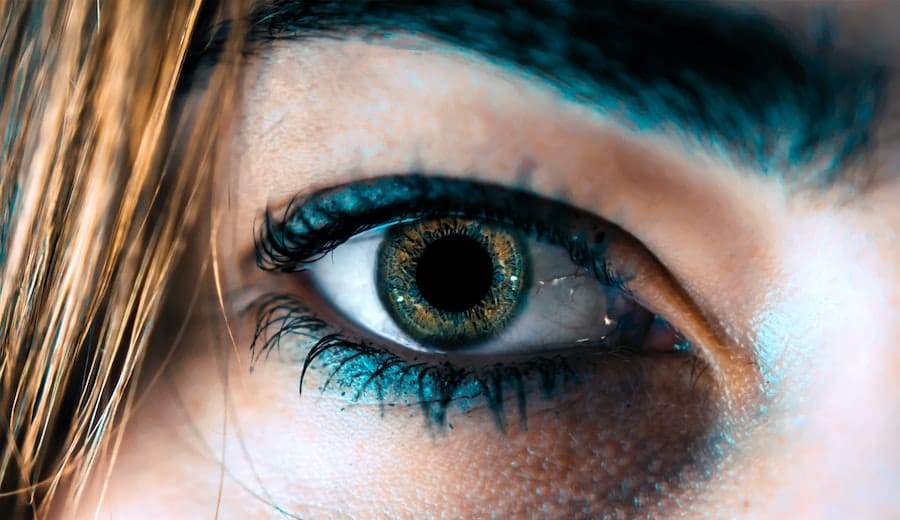
The microblading process typically begins with a consultation where you discuss your desired brow shape and color with the artist. The artist will assess your natural features and make recommendations based on your preferences and facial structure.
Once you have agreed on the desired shape and color, the artist will apply a numbing cream to minimize any discomfort during the procedure. After the numbing cream has taken effect, the artist will begin the microblading process.
Using a handheld tool with tiny needles, the artist will create hair-like strokes in the direction of natural hair growth. The strokes are made in a precise and controlled manner to ensure a natural-looking result. The artist will continue to add strokes until the desired shape and fullness are achieved.
The entire process typically takes about two hours to complete. During this time, you may experience some discomfort or slight bleeding, but this is normal and should subside quickly. After the procedure is complete, the artist will apply a healing ointment to help with the healing process.
Aftercare Tips for Maintaining Your Microbladed Eyebrows
Proper aftercare is crucial for maintaining the results of your microbladed eyebrows. Following these tips will help ensure that your brows heal properly and that the pigment lasts as long as possible.
– Avoid getting your eyebrows wet for at least 24 hours after the procedure.
– Avoid touching or scratching your eyebrows during the healing process.
– Apply a thin layer of healing ointment to your eyebrows several times a day for the first week.
– Avoid excessive sweating or exposure to direct sunlight during the healing process.
– Avoid using makeup or skincare products on your eyebrows until they are fully healed.
– Avoid swimming or soaking in hot tubs until your eyebrows are fully healed.
It is also important to avoid common mistakes that can affect the results of your microbladed eyebrows. These include picking at scabs, using harsh cleansers or exfoliants on your eyebrows, and exposing them to excessive moisture or sunlight.
To prolong the life of your microbladed eyebrows, it is recommended to schedule touch-up appointments every 12-18 months. This will help maintain the shape and color of your brows and ensure that they continue to look their best.
Common Myths and Misconceptions About Microblading
There are several common myths and misconceptions about microblading that can cause confusion or hesitation for those considering the procedure. It is important to debunk these myths and clarify the differences between microblading and traditional eyebrow tattooing.
One common myth is that microblading is painful. While some discomfort may be experienced during the procedure, the numbing cream applied beforehand helps minimize any pain or discomfort. Most clients describe the sensation as a slight scratching or pressure.
Another myth is that microblading is permanent. Unlike traditional eyebrow tattooing, which uses permanent ink, microblading uses semi-permanent pigment that fades over time. This allows for more flexibility in changing the shape or color of the brows as desired.
It is also important to clarify that microblading is not suitable for everyone. Those with certain medical conditions, such as diabetes or autoimmune disorders, may not be good candidates for the procedure. It is important to consult with a microblading artist or medical professional to determine if microblading is right for you.
How Microblading Can Benefit Those with Sparse or Thin Eyebrows
Microblading can be a game-changer for those with sparse or thin eyebrows. This procedure can help create the appearance of fuller, more defined brows and enhance facial features.
For those with sparse eyebrows, microblading can fill in gaps and create a more even and symmetrical look. The hair-like strokes created during the procedure mimic the appearance of natural eyebrow hairs, resulting in a realistic and natural-looking result.
Microblading can also benefit those with thin eyebrows by adding volume and definition. The artist can create a shape that complements your facial features and enhances your natural beauty.
There are countless success stories of individuals who have transformed their brows through microblading. Before and after photos show dramatic differences in brow shape and fullness, giving clients a newfound confidence and sense of self.
Frequently Asked Questions About Microblading and Eyebrow Enhancement
1. How should I prepare for my microblading appointment?
Before your microblading appointment, it is important to avoid alcohol, caffeine, and blood-thinning medications for at least 24 hours. It is also recommended to avoid excessive sun exposure and tanning beds leading up to your appointment. It is a good idea to arrive with clean skin and no makeup on your eyebrows.
2. What should I do if I’m not happy with the results of my microblading?
If you are not happy with the results of your microblading, it is important to communicate your concerns with your artist. They may be able to make adjustments or offer a touch-up appointment to address any issues. It is important to remember that the results of microblading are not permanent and can be adjusted or changed as desired.
3. How long does the healing process take?
The healing process for microbladed eyebrows typically takes about four to six weeks. During this time, you may experience some scabbing, itching, and flaking as the skin heals. It is important to avoid picking at scabs or scratching your eyebrows during this time to ensure proper healing.
4. Can I still wear makeup on my eyebrows after microblading?
It is recommended to avoid using makeup or skincare products on your eyebrows until they are fully healed. This includes eyebrow pencils, powders, and gels. Once your eyebrows are fully healed, you can resume wearing makeup as desired.
Microblading is a popular and effective method of achieving perfectly shaped and defined eyebrows. This semi-permanent cosmetic procedure offers natural-looking results that can last for months. Choosing a skilled and experienced microblading artist is crucial to achieving the best possible results and minimizing the risk of complications.
Color theory plays an important role in achieving natural-looking eyebrows through microblading. The right color choice can help create a seamless and realistic result that complements your natural features. There are also different styles of microblading to choose from, each with its own unique look and effect.
The microblading process involves creating hair-like strokes on the skin using a handheld tool with tiny needles. The entire process typically takes about two hours to complete. Proper aftercare is crucial for maintaining the results of your microbladed eyebrows and prolonging their lifespan.
Microblading can benefit those with sparse or thin eyebrows by filling in gaps, adding volume, and enhancing facial features. It is important to consult with a microblading artist or medical professional to determine if microblading is right for you and to address any concerns or questions you may have.
In conclusion, microblading is a great option for those who want to enhance their eyebrows and achieve a more polished and put-together look. With the help of a skilled artist, you can achieve natural-looking results that can last for months. Consider microblading as an option for eyebrow enhancement and enjoy the confidence that comes with perfectly shaped and defined eyebrows.
If you’re interested in enhancing your natural beauty through cosmetic tattooing, you might also want to check out this related article on Embellish PB’s website. It explores the art of eyebrow tattooing and microblading, providing valuable insights into how these techniques can create natural-looking eyebrows. Whether you’re looking to transform sparse brows or simply enhance your existing ones, this article offers a comprehensive guide to achieving the perfect brows.

